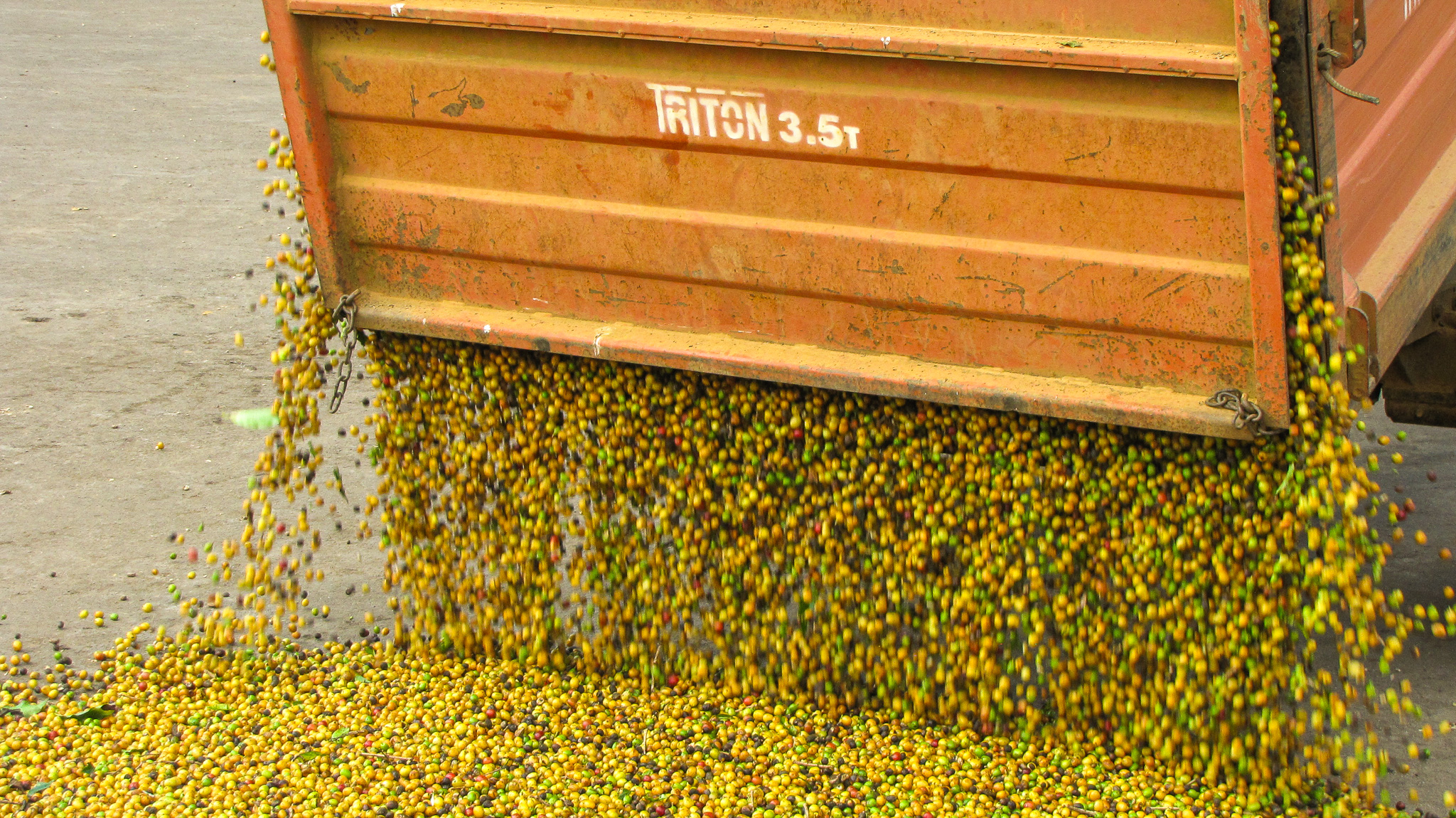In specialty coffee, the way a cherry is picked can have a profound impact on cup quality. While much attention is given to processing and roasting, the harvesting stage sets the foundation. Among the various harvesting methods - mechanical, manual, and selective, each carries implications for labor, cost, efficiency, and, ultimately, flavour.
In Brazil, selective picking is rare, even among specialty producers. The country’s flat terrain, high labour costs, and large-scale production make it impractical in most cases. Still, we work closely with a small group of producers who choose to handpick selectively, aiming to push quality to its highest potential.
In some cases, when terrain or infrastructure already dictates manual picking, we encourage partners to experiment with selective picking to create highly differentiated lots. But it’s also important to recognise where this method simply doesn’t make sense. As buyers, our goal is to understand each origin’s realities, supporting producers in improving quality where it’s viable and sustainable to do so.

Understanding Coffee Picking Techniques
Manual Picking
Manual coffee picking is a traditional method where cherries are harvested by hand. In regions with rugged or steep terrain or small farm sizes, this is often the only feasible approach. Important to note here is that manual picking doesn't automatically imply selective harvesting.
Strip Picking
Strip picking is a quicker manual method where all cherries on a branch are removed at once, ripe or not. It’s widely used in Brazil and globally due to its efficiency. While this method can result in more underripe cherries in the harvest, our partners achieve high-quality coffee through careful post-harvest sorting and processing.
Selective Picking
Selective picking means harvesting only ripe cherries, often over several passes. It requires training and two to three times more labour than conventional methods, but yields sweeter, more complex cups. Still, increasingly varied cherry maturation makes full selectivity increasingly difficult in many regions.
Mechanical Picking
Mechanical harvesters dominate in Brazil, where flat terrain and large farms make them practical. Machines pick cherries at different ripeness levels, but post-harvest sorting, using flotation tanks, optical sorters, and density tables, helps ensure quality. At the export mill, the process starts with a winnower to remove debris, followed by density sorting (to separate heavier, mature beans), and screen grading by size. Many of our partners reinvest in this equipment and training, ensuring their coffees are clean, well-processed, and true to their potential.
How our producers work successfully with different picking techniques?

As an early adopter of specialty production, Natália is still a believer in selective picking! Also an early mover in anaerobic fermentations using not only patio/vulkan methods, but barrels and drying boxes (as well as assisting on other farms in Mantiqueira de Minas); Natália found that homogenous cherry fermented more evenly, had better clarity and cup profile and produced less defects or off flavours. This is likely because of the similar sugar content in the batches. Whilst some farms in Brazil are well capitalised, not all have the facilities to sort and separate cherry post-harvest, therefore selective picking can level the playing field and create opportunity for highly differentiated coffee (regardless of farm size and infrastructure). Natália tends to plan for this in smaller areas, known to produce good cup quality, or with single variety microlots.

Adolfo has a beautiful farm that is quite large in size, despite this, his harvest is 100% manual. This is for two reasons, one is topography, some small areas probably could be mechanised but a decision was made not to. The other reason is to do with the commitment of Adolfo, to regenerative practice. The steward of Passeio for the last 30 years, the forest is gradually encroaching upon the coffee field. With shade trees popping up between rows, blocking the path for large mechanised harvesters.
Instead Adolfo has invested in a fleet of Makita hand harvesters and batteries. Each battery lasts around an hour, and an old storage room has been converted into a solar powered charging room for extra batteries. So one of the team is in charge of distributing charged batteries to the field and returning the used batteries to the charger. This way Adolfo can maintain the landscape, harvest efficiently and is working on carbon neutral status. The investment was large, so large that Makita came to visit the farm and see the harvest system at work.
Due to the way the machine shakes the tree branches, there are less underripes in the final picking. And like selective picking, multiple passes can be performed to harvest more even maturation ranges. This also helps to manage the post-harvest workflow.
Passeio has found great success with this harvest system, in combination with a hydraulic separator and careful post-harvest protocols, producing really high quality elevated large lots while balancing efficiency and nature. Cupping through the harvest, you find so many very sweet and elegant profiles, in lot sizes between 10- 320 bags.
Coffees on our Offer List
These Brazilian lots highlight the results of different harvest strategies, from selective handpicking to efficient mechanical systems, each bringing its own nuance to the cup.
Passeio #2 by Adolfo Vieira & Edilene de Oliveira
100% manually harvested with handheld electric machines. Complex aroma with elegant yellow fruit and plush acidity. This lot stood out on cupping as a clean and sweet profile amongst microlots. We thought it offered a great value for a single estate.
Toca da Jaguara #3 by Natália Moreira Brito
Carefully considered, this is a single variety Acauã lot. Natália separated this for fermentation after having a good experience with the cup profile on Jaguara farm. Fermended on black canvas for 72 hours, the lot was then dried in cherry on raised beds for 12 days. Resulting in a cup profile that shows boozy fruit and wild aromatics.
See all our coffees on the offer list here.
If you're looking at buying from Brazil, pre-book your coffees or order samples and connect with your sales representative who happily looks into this and helps you!





